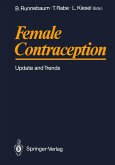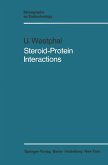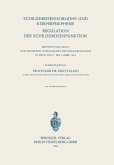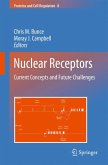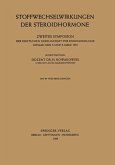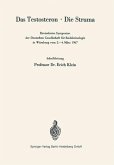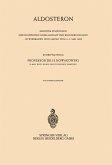73,95 €
73,95 €
inkl. MwSt.
Sofort per Download lieferbar

37 °P sammeln
73,95 €
Als Download kaufen

73,95 €
inkl. MwSt.
Sofort per Download lieferbar

37 °P sammeln
Jetzt verschenken
Alle Infos zum eBook verschenken
73,95 €
inkl. MwSt.
Sofort per Download lieferbar
Alle Infos zum eBook verschenken

37 °P sammeln
- Format: PDF
- Merkliste
- Auf die Merkliste
- Bewerten Bewerten
- Teilen
- Produkt teilen
- Produkterinnerung
- Produkterinnerung

Bitte loggen Sie sich zunächst in Ihr Kundenkonto ein oder registrieren Sie sich bei
bücher.de, um das eBook-Abo tolino select nutzen zu können.
Hier können Sie sich einloggen
Hier können Sie sich einloggen
Sie sind bereits eingeloggt. Klicken Sie auf 2. tolino select Abo, um fortzufahren.

Bitte loggen Sie sich zunächst in Ihr Kundenkonto ein oder registrieren Sie sich bei bücher.de, um das eBook-Abo tolino select nutzen zu können.
- Geräte: PC
- ohne Kopierschutz
- eBook Hilfe
- Größe: 28.29MB
Andere Kunden interessierten sich auch für
![Female Contraception (eBook, PDF) Female Contraception (eBook, PDF)]() Female Contraception (eBook, PDF)73,95 €
Female Contraception (eBook, PDF)73,95 €![Steroid-Protein Interactions (eBook, PDF) Steroid-Protein Interactions (eBook, PDF)]() Ulrich WestphalSteroid-Protein Interactions (eBook, PDF)73,95 €
Ulrich WestphalSteroid-Protein Interactions (eBook, PDF)73,95 €- -22%11
![Schilddrüsenhormone und Körperperipherie. Regulation der Schilddrüsenfunktion (eBook, PDF) Schilddrüsenhormone und Körperperipherie. Regulation der Schilddrüsenfunktion (eBook, PDF)]() Schilddrüsenhormone und Körperperipherie. Regulation der Schilddrüsenfunktion (eBook, PDF)42,99 €
Schilddrüsenhormone und Körperperipherie. Regulation der Schilddrüsenfunktion (eBook, PDF)42,99 € ![Nuclear Receptors (eBook, PDF) Nuclear Receptors (eBook, PDF)]() Nuclear Receptors (eBook, PDF)161,95 €
Nuclear Receptors (eBook, PDF)161,95 €- -22%11
![Stoffwechselwirkungen der Steroidhormone (eBook, PDF) Stoffwechselwirkungen der Steroidhormone (eBook, PDF)]() Stoffwechselwirkungen der Steroidhormone (eBook, PDF)42,99 €
Stoffwechselwirkungen der Steroidhormone (eBook, PDF)42,99 € - -22%11
![Das Testosteron · Die Struma (eBook, PDF) Das Testosteron · Die Struma (eBook, PDF)]() Das Testosteron · Die Struma (eBook, PDF)42,99 €
Das Testosteron · Die Struma (eBook, PDF)42,99 € - -22%11
![Aldosteron (eBook, PDF) Aldosteron (eBook, PDF)]() Aldosteron (eBook, PDF)42,99 €
Aldosteron (eBook, PDF)42,99 € -
-
-
Produktdetails
- Verlag: Springer Berlin Heidelberg
- Seitenzahl: 245
- Erscheinungstermin: 6. Dezember 2012
- Englisch
- ISBN-13: 9783642813399
- Artikelnr.: 53136106
Dieser Download kann aus rechtlichen Gründen nur mit Rechnungsadresse in A, B, BG, CY, CZ, D, DK, EW, E, FIN, F, GR, HR, H, IRL, I, LT, L, LR, M, NL, PL, P, R, S, SLO, SK ausgeliefert werden.
- Herstellerkennzeichnung Die Herstellerinformationen sind derzeit nicht verfügbar.
I. Introduction.- 1. Historical Aspects of Steroid Hormone Action.- 2. General Consideration of the Steroid Receptor Concept.- II. Steroid Receptor Characterization and Measurement.- 1. Receptor Criteria.- 2. Receptor Parameters: Theory and Practice.- 3. Receptor States and 3H-Steroid Exchange.- 4. Methods of Receptor Assay.- III. Cellular Compartments and Translocation of Receptor-Steroid Complexes.- 1. Cytoplasmic or Nuclear Localization of Receptors.- 2. Evidence for Nuclear Preference.- 3. Are Cytoplasmic Receptors Necessary?.- 4. Mechanisms for Steroid Accumulation not Involving Receptors.- IV. Characteristics of Cytoplasmic and Nuclear Receptor Forms.- 1. Cytoplasmic Forms of Estrogen and Progesterone Receptors.- 2. Nuclear Binding of Estrogen and Progesterone Receptors.- 3. Nuclear Acceptor Sites and Nuclear Binding.- V. Nuclear Binding and Biologic Response.- 1. Nuclear Occupancy and Response.- 2. Nuclear Acceptors and Long-Term Nuclear Retention.- 3. Uterotropic Response and Nuclear Retention of the Estrogen Receptor.- 4. Nuclear Receptor Binding and the Control of Transcriptional Events in the Uterus.- 5. Interrelationships Between Early and Late Uterotropic Responses.- 6. Nuclear Binding and RNA Transcription in the Chick Oviduct.- 7. Nuclear Binding and the Control of RNA and Protein Synthesis in the Chicken Liver.- VI. Control of Steroid Receptor Levels and Steroid Antagonism.- 1. Control of Estrogen Receptor Concentrations.- 2. The Relationship of Cytoplasmic Replenishment of the Estrogen Receptor to Biologic Response.- 3. Control of the Progesterone Receptor by Estrogen.- 4. Effects of Progesterone on the Control of Progesterone Receptor.- 5. Control of Estrogen Receptor Levels by Progesterone and Its Relationship to Estrogen Antagonism.- 6. Estradiol Antagonism by Estriol and Other Short-Acting Estrogens.- 7. Triphenylethylene Derivatives and Estrogen Antagonism.- 8. General Considerations of Steroid Antagonism and Hormone Potency.- VII. Steroid Hormones and Neoplasia.- 1. Estrogens and Cancer.- 2. Triphenylethylene Derivatives, Hyperestrogenization, and Reproductive-Tract Cancer.- 3. Hyperestrogenization and Nuclear Body Formation.- 4. Steroid Receptors and Neoplasia.- VIII. Physiologic Relationships and Steroid Receptor Binding.- 1. Blood Binding and Metabolism of Steroids.- 2. Steroid Receptors During Development.- 3. Steroid Receptor Binding During the Reproductive Cycle.- IX. Gonadal Steroids and Brain Function.- 1. Distribution of Targets Within the Central Nervous System.- 2. Cytoplasmic Receptors for Estrogens and Progestins in the Central Nervous System.- 3. Translocation of Estrogen Receptors to Nuclear Compartments.- 4. Age- and Sex-Related Differences in Receptor Content or Function.- 5. Gonadal Steroids and Nervous System Function.- X. Speculations and Conclusions.- 1. Interplay of Low-and High-Affinity Steroid Receptive Sites.- 2. Spare Receptors and Hormone-Induced Responses.- 3. Nuclear Acceptors and Salt-Insoluble Receptors.- 4. Nuclear Processing of the Receptor-Estrogen Complex.- 5. Homeostatic vs. Growth-Regulating Steroid Hormones.- 6. Conclusions.- 7. Epilogue.- References.
I. Introduction.- 1. Historical Aspects of Steroid Hormone Action.- 2. General Consideration of the Steroid Receptor Concept.- II. Steroid Receptor Characterization and Measurement.- 1. Receptor Criteria.- 2. Receptor Parameters: Theory and Practice.- 3. Receptor States and 3H-Steroid Exchange.- 4. Methods of Receptor Assay.- III. Cellular Compartments and Translocation of Receptor-Steroid Complexes.- 1. Cytoplasmic or Nuclear Localization of Receptors.- 2. Evidence for Nuclear Preference.- 3. Are Cytoplasmic Receptors Necessary?.- 4. Mechanisms for Steroid Accumulation not Involving Receptors.- IV. Characteristics of Cytoplasmic and Nuclear Receptor Forms.- 1. Cytoplasmic Forms of Estrogen and Progesterone Receptors.- 2. Nuclear Binding of Estrogen and Progesterone Receptors.- 3. Nuclear Acceptor Sites and Nuclear Binding.- V. Nuclear Binding and Biologic Response.- 1. Nuclear Occupancy and Response.- 2. Nuclear Acceptors and Long-Term Nuclear Retention.- 3. Uterotropic Response and Nuclear Retention of the Estrogen Receptor.- 4. Nuclear Receptor Binding and the Control of Transcriptional Events in the Uterus.- 5. Interrelationships Between Early and Late Uterotropic Responses.- 6. Nuclear Binding and RNA Transcription in the Chick Oviduct.- 7. Nuclear Binding and the Control of RNA and Protein Synthesis in the Chicken Liver.- VI. Control of Steroid Receptor Levels and Steroid Antagonism.- 1. Control of Estrogen Receptor Concentrations.- 2. The Relationship of Cytoplasmic Replenishment of the Estrogen Receptor to Biologic Response.- 3. Control of the Progesterone Receptor by Estrogen.- 4. Effects of Progesterone on the Control of Progesterone Receptor.- 5. Control of Estrogen Receptor Levels by Progesterone and Its Relationship to Estrogen Antagonism.- 6. Estradiol Antagonism by Estriol and Other Short-Acting Estrogens.- 7. Triphenylethylene Derivatives and Estrogen Antagonism.- 8. General Considerations of Steroid Antagonism and Hormone Potency.- VII. Steroid Hormones and Neoplasia.- 1. Estrogens and Cancer.- 2. Triphenylethylene Derivatives, Hyperestrogenization, and Reproductive-Tract Cancer.- 3. Hyperestrogenization and Nuclear Body Formation.- 4. Steroid Receptors and Neoplasia.- VIII. Physiologic Relationships and Steroid Receptor Binding.- 1. Blood Binding and Metabolism of Steroids.- 2. Steroid Receptors During Development.- 3. Steroid Receptor Binding During the Reproductive Cycle.- IX. Gonadal Steroids and Brain Function.- 1. Distribution of Targets Within the Central Nervous System.- 2. Cytoplasmic Receptors for Estrogens and Progestins in the Central Nervous System.- 3. Translocation of Estrogen Receptors to Nuclear Compartments.- 4. Age- and Sex-Related Differences in Receptor Content or Function.- 5. Gonadal Steroids and Nervous System Function.- X. Speculations and Conclusions.- 1. Interplay of Low-and High-Affinity Steroid Receptive Sites.- 2. Spare Receptors and Hormone-Induced Responses.- 3. Nuclear Acceptors and Salt-Insoluble Receptors.- 4. Nuclear Processing of the Receptor-Estrogen Complex.- 5. Homeostatic vs. Growth-Regulating Steroid Hormones.- 6. Conclusions.- 7. Epilogue.- References.

